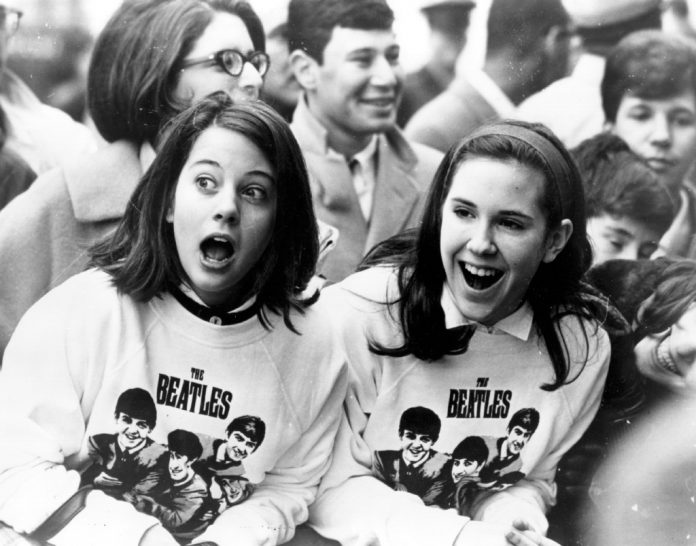By David Cohea, ReMIND Magazine
High school life in 1960 was very different from the decade’s end in 1969. Starting off, things were much like the conservative 1950s, with car culture and mom-and-pop fashions much the order of the day.
Early in the decade, three trends caught on with teens. First there was monster mania, with many of the classic Universal monster films now on television; bubble gum wrappers and lunch boxes; and the radio crawling with novelty hits like “Monster Mash” by Bobby “Boris” Pickett (1962) and “My Son, the Vampire” by Allan Sherman (1964). Standing amid the horrors of the hit TV show The Munsters was ugly duckling niece Marilyn (originally played by Beverley Owen and then Pat Priest), a very normal-looking blond teenager who suffered outcast status amid her gruesome relatives. What teen couldn’t relate?
As if to dispel those creatures of the popular night, beach music then rode a wave of jangly guitars and surfboards across America. The Beach Boys blasted from every beachside transistor radio, and teens flocked to drive-ins to catch Frankie Avalon and Annette Funicello in a gaggle of beach movies including Beach Party (1963) and Bikini Beach (1964). There were even monster/beach hybrids like The Horror of Party Beach (1964). But the ultimate beach movie was The Endless Summer (1965), a permanent escape from an increasingly turbulent decade. The theme song by the Sandals echoes surf dreams to this day.
Then came the tsunami of Beatlemania. The Beatles overtook America with a storm of No. 1 hits in 1964 including “I Want to Hold Your Hand,” “Can’t Buy Me Love,” “She Loves You” and “Love Me Do.” Hysteria, which Elvis and Frank Sinatra could once summon, fired screaming and fainting legions of fans of the Liverpool mop-tops. Teens erected bedroom shines to their favorite Beatle with posters, photographs and other ephemera.
Meanwhile, things in the ’60s were changing fast with the passing of the Civil Rights Act, growing sentiment against the Vietnam War and popular music becoming louder, harder and belligerent. Hippie counterculture began influencing teen style, with bell-bottoms, hip-huggers, miniskirts and go-go boots appearing in school hallways. For boys, some of their hair crept over shirt collars while others sported Afro haircuts. Bedrooms began to see day-glo posters, which glowed incandescent under black lights, and stereos blasting the likes of Jimi Hendrix, Jefferson Airplane and Cream.
Popular dances of the early ’60s included the Twist, the Watusi and the Mashed Potato, but as the music got louder and wilder, dancing lost its formality and became an amorphous shimmy and shake. As the decade ended, no one knew where things were headed, but the quiet conservatism of the early ’60s was long gone.

